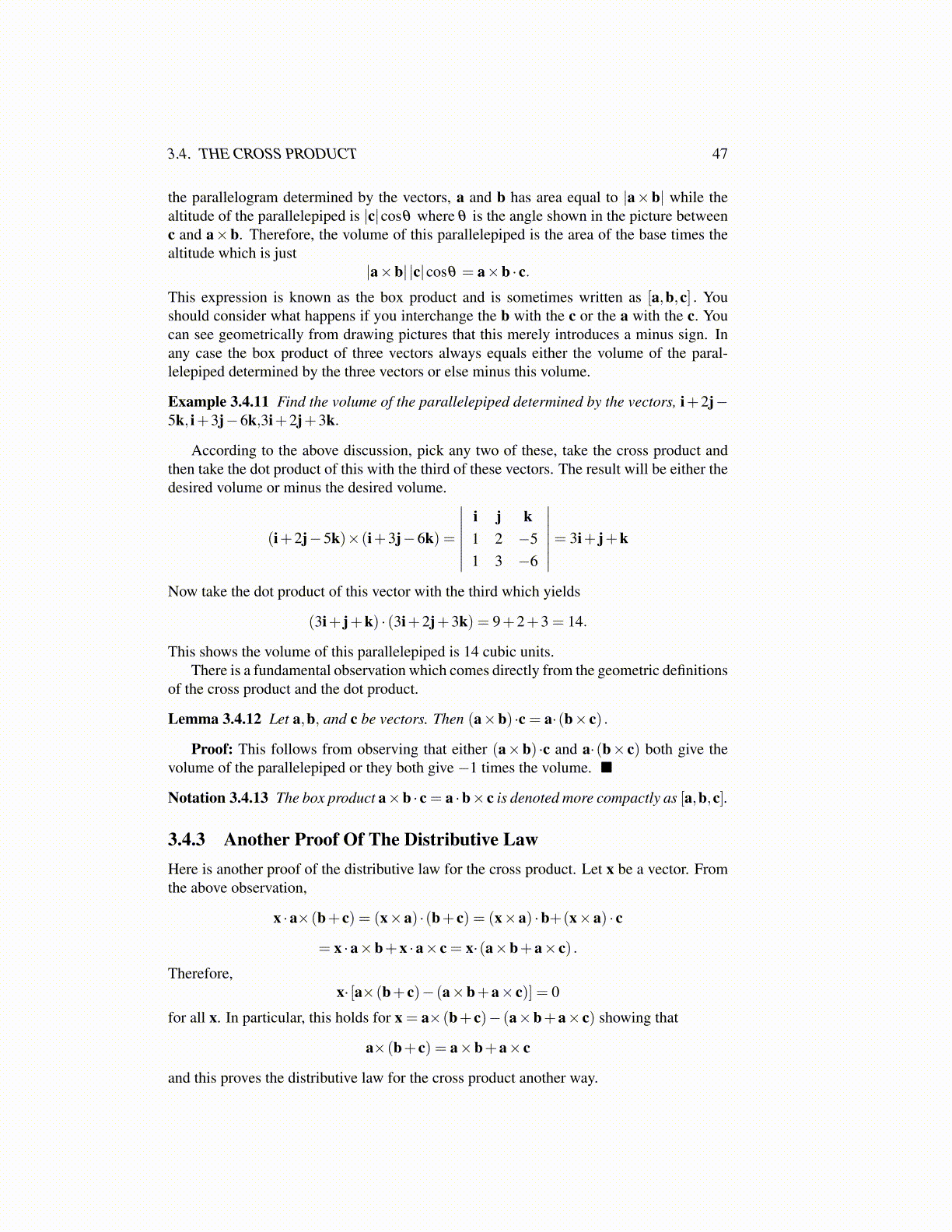
3.4. THE CROSS PRODUCT 47
the parallelogram determined by the vectors, a and b has area equal to |a×b| while thealtitude of the parallelepiped is |c|cosθ where θ is the angle shown in the picture betweenc and a×b. Therefore, the volume of this parallelepiped is the area of the base times thealtitude which is just
|a×b| |c|cosθ = a×b · c.This expression is known as the box product and is sometimes written as [a,b,c] . Youshould consider what happens if you interchange the b with the c or the a with the c. Youcan see geometrically from drawing pictures that this merely introduces a minus sign. Inany case the box product of three vectors always equals either the volume of the paral-lelepiped determined by the three vectors or else minus this volume.
Example 3.4.11 Find the volume of the parallelepiped determined by the vectors, i+2j−5k, i+3j−6k,3i+2j+3k.
According to the above discussion, pick any two of these, take the cross product andthen take the dot product of this with the third of these vectors. The result will be either thedesired volume or minus the desired volume.
(i+2j−5k)×(i+3j−6k) =
∣∣∣∣∣∣∣i j k1 2 −51 3 −6
∣∣∣∣∣∣∣= 3i+ j+k
Now take the dot product of this vector with the third which yields
(3i+ j+k) · (3i+2j+3k) = 9+2+3 = 14.
This shows the volume of this parallelepiped is 14 cubic units.There is a fundamental observation which comes directly from the geometric definitions
of the cross product and the dot product.
Lemma 3.4.12 Let a,b, and c be vectors. Then (a×b) ·c = a·(b× c) .
Proof: This follows from observing that either (a×b) ·c and a·(b× c) both give thevolume of the parallelepiped or they both give −1 times the volume. ■
Notation 3.4.13 The box product a×b · c = a ·b× c is denoted more compactly as [a,b,c].
3.4.3 Another Proof Of The Distributive LawHere is another proof of the distributive law for the cross product. Let x be a vector. Fromthe above observation,
x ·a×(b+ c) = (x×a) ·(b+ c) = (x×a) ·b+(x×a) · c
= x ·a×b+x ·a× c = x·(a×b+a× c) .
Therefore,x· [a×(b+ c)− (a×b+a× c)] = 0
for all x. In particular, this holds for x = a×(b+ c)− (a×b+a× c) showing that
a×(b+ c) = a×b+a× c
and this proves the distributive law for the cross product another way.